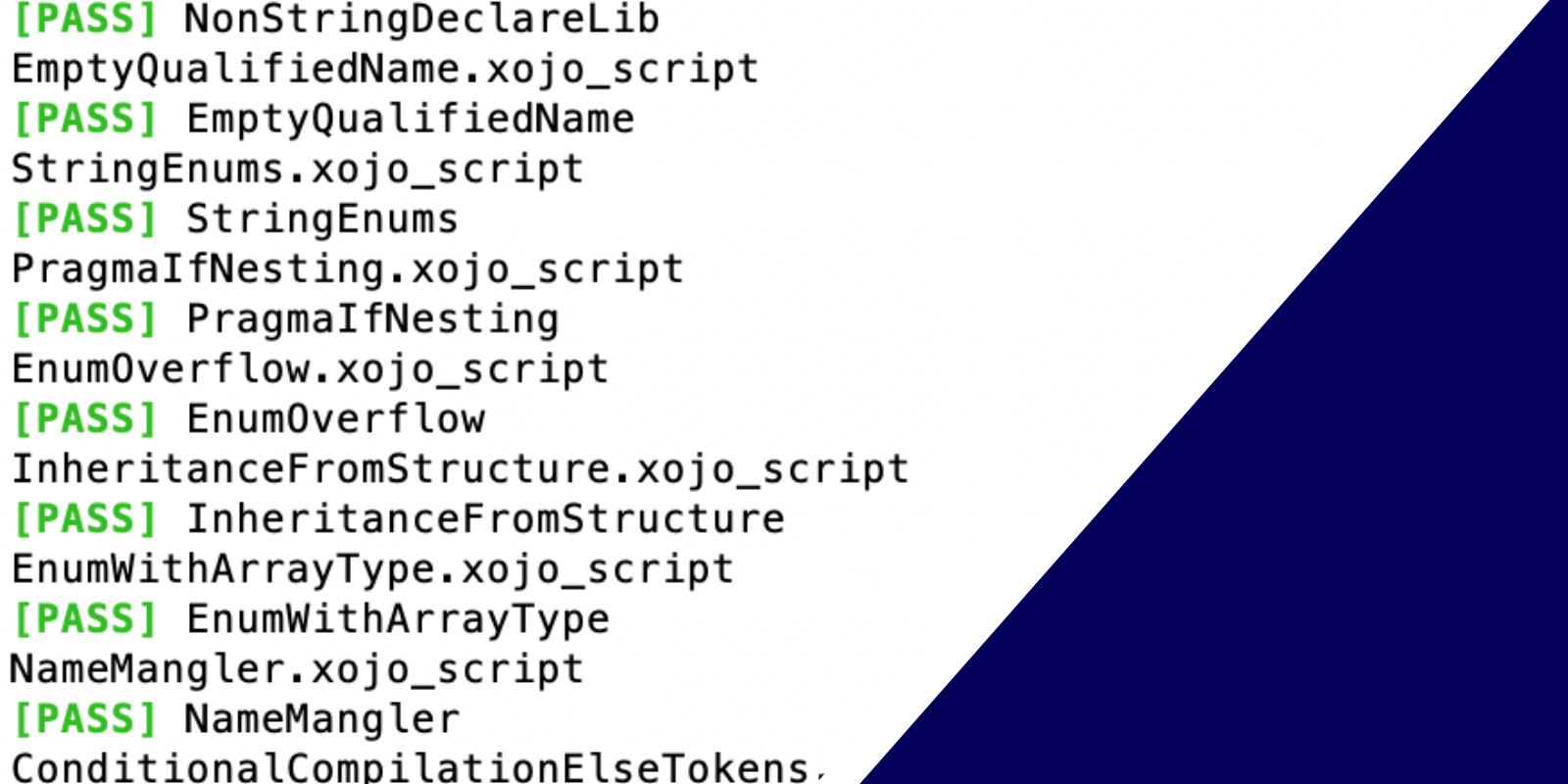Xojo has an extensive testing period where actual users test a pre-release version with their projects but if you are wondering what kind of testing we do internally before each pre-release of Xojo, we have quite a bit of automated testing processes. There are over 400 tests just for the compiler alone. Already, we are approaching 300 tests for our Android framework. In total, across all supported platforms, there are over 2500 automated tests.
Comments closedTag: Development
There seem to be a lot of misconceptions about what the MVPs do. Some say it’s just a shiny pin on our lapels, others expect us to be Xojo’s de facto QA. So, what’s expected of us and what do we really do?
Comments closedXojo 2021 Release 3 has a few improvements to the Crypto module that you might find useful such as SHA3, BlowFish/TwoFish and CRC-32.
Comments closedXojo 2021 Release 3 Xojo introduces a new set of Desktop controls. Each of these controls replaces its original control counterpart and is prefixed with Desktop. For example, Window is now DesktopWindow and TextField is now DesktopTextField. The driving logic behind these new controls is that they allow us to make their event names match the Web and Mobile versions. In addition, the new controls gave us the opportunity to make some other changes to various methods that would have been problematic to make in the existing controls. Desktop controls now are a much closer match in terms of API to their Web and Mobile equivalents. These new controls make more code work without changes when you move from one project type to another.
Comments closed…why (does) this process seems so complicated in the first place? What Apple is trying to do is to provide operational security…
Comments closedEarlier this year ago I wrote a post about using the SF Font symbols on macOS Picture.SystemImagein iOS apps. However that technique has some downsides. For one, the symbol glyphs are hardcoded, which means that it’s not possible to access the new symbols added to the SF Font by Apple. In addition, it isn’t possible to set the font weight and scale for the glyph. In this new post, I’ll show a more flexible way to work with these symbols on macOS 11+.
Like many Xojo developers, I often use virtual machines for testing. Over time the virtual machine disk files can get pretty large, even if you…
Comments closedYuck! It happens to everyone, from beginners to experienced developers: sometimes you’ll get stuck. Perhaps the code you’re working on just won’t do what you want or maybe you’re having trouble understanding code plucked from the internet. Talk to the duck. The rubber duck, that is. The term “rubber ducking” or “rubber duck debugging” is a software development technique where you explain the problem you are having to a rubber duck (or appropriate substitute). Often the act of explaining the problem to someone else, even if that someone is not real, can help you figure it out. It might be like inspiration struck.
Comments closedI recently watched this video from Computerphile on YouTube (one of my favorite channels). It demonstrates a simple bit-shift operation can generate amazing random strings of numbers. I thought I’d quickly convert it to Xojo.
Comments closedWith API 2.0, Xojo has taken the opportunity to transition to more consistent APIs, modernize frameworks when we can and generally prepare for the future so that you can continue to use Xojo to make great apps for a long time. We are excited about the future of Xojo and can’t wait to see the apps you create!
Comments closed
